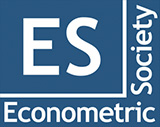Econometrica: Oct, 1956, Volume 24, Issue 4
The Theory of Capital and Its Time Measures
https://doi.org/0012-9682(195610)24:4<467:TTOCAI>2.0.CO;2-Z
p. 467-479
Conrad Alexander Blyth
The Austrian theory relating capital, output (income), and input (labour and land) measures the time dimension of capital by a single interval, the period of production. Only in special cases, such as the maturing of wine and the growing of timber, is the exact theory satisfactory, while its use as an approximation to reality is open to criticism. The objections can be removed by introducing further time measures--the variances of the input and output distributions over time, and the higher statistical moments. In the exact, general case the relations between the sets of moments, the rate of return, the real wage rate, and a suitably defined production function determine output, input, and the value of capital. The ratios of capital to output, and wage and rent bills to income, are analysed. Suitable approximations depending upon the moments and the rate of return are available.

